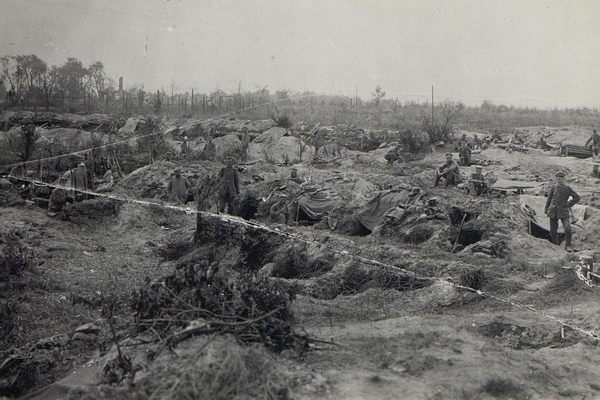A WWI Anthrax Outbreak Was Caused by Shaving Brushes
Lathering up could be painful.

In 1915, not long into World War I, the British military noticed something troubling. An unusually large number of newly recruited soldiers were developing anthrax infections on their heads and necks. At first, the outbreak, which affected both British and American soldiers, was attributed to “diabolical tactics of the enemy,” according to a recent historical report from the Centers for Disease Control and Prevention (CDC). But biological warfare wasn’t the culprit. Instead, it was the humble shaving brushes the soldiers were given upon enlistment, because a clean-shaven face would make a gas mask more effective.
Before the war, shaving brushes were usually made with badger hair, the preferred bristles for lathering up. When the conflict interrupted the supply of high-quality badger bristles from Russia, suppliers cut a few corners. They switched to horsehair from Russia, China, and Japan—and skimped on a crucial step: disinfection. Instead of sending the hair to France or Germany to be cleaned and sanitized, they sent the tufts directly to brush manufacturers in the United States.
The blisters and blackened ulcers on the soldiers’ faces and necks are classic symptoms of anthrax, which is caused by a bacteria found in soil. Livestock and other animals can spread the disease to humans, though it’s not otherwise contagious. Inhaling or ingesting anthrax spores can cause a dangerous infection, but anthrax infections on the skin are rarely lethal if properly treated. Between 1915 and 1924, 149 American soldiers, 28 British servicemen, and 67 civilians in both countries contracted the disease. The number likely would have been higher if New York City hadn’t forced manufacturers to sterilize their brushes starting in 1920.


Anthrax was not uncommon in the early 20th century, especially among people who worked with livestock and animal products such as wool and leather. Today, the disease is relatively rare in the United States and northern Europe, but occasional cases crop up in cows and bison. Anthrax is much more common in places, such as Asia, Africa, and Australia, where livestock aren’t routinely vaccinated against it.
If you choose to lather up today with a nice badger brush, you should be fine. The CDC cautions against disinfecting vintage brushes yourself (“the risks associated with various combinations of steam, pressure, and formaldehyde are likely to outweigh possible benefits”), but ones made after 1930 are usually safe, and all modern brushes are sanitized.







Follow us on Twitter to get the latest on the world's hidden wonders.
Like us on Facebook to get the latest on the world's hidden wonders.
Follow us on Twitter Like us on Facebook